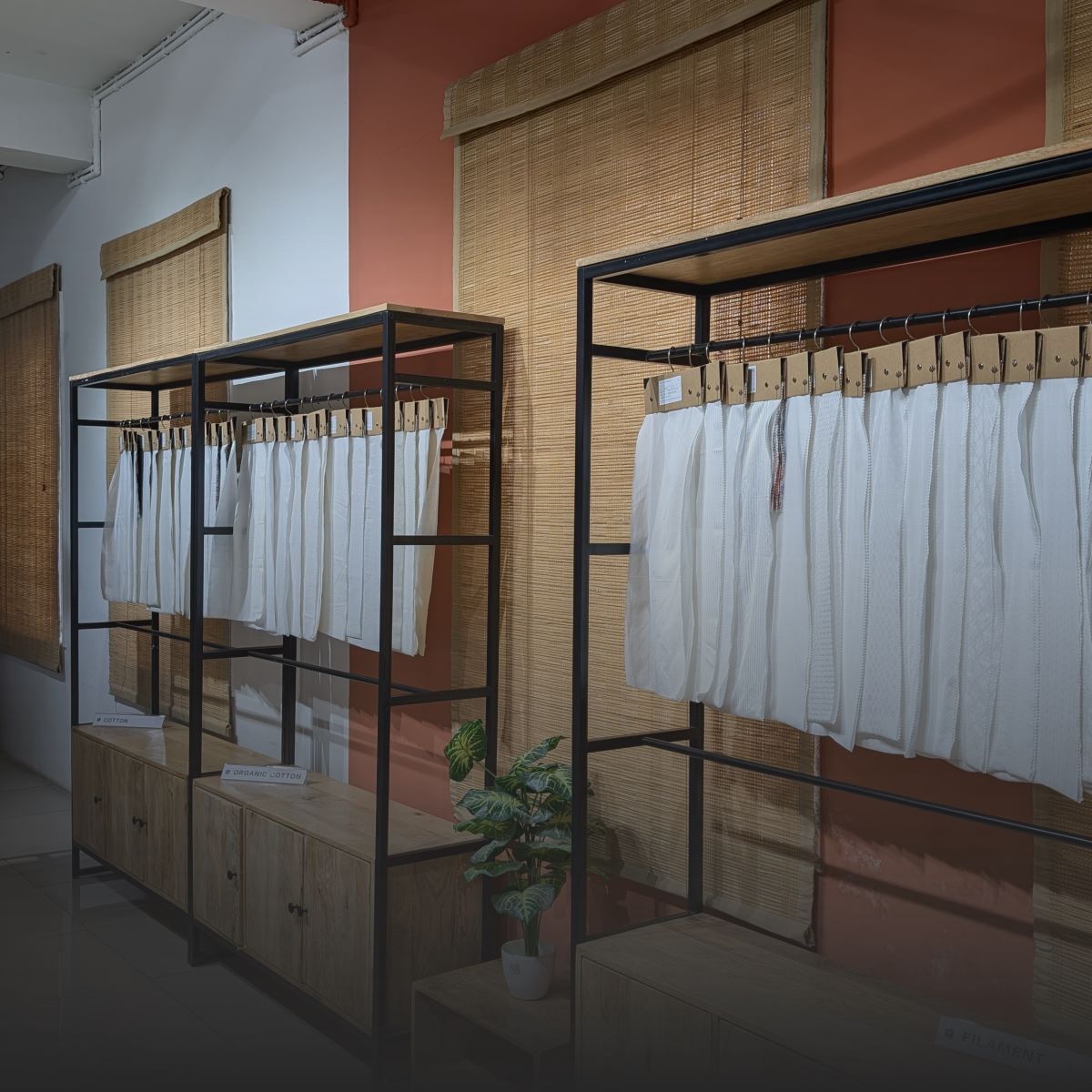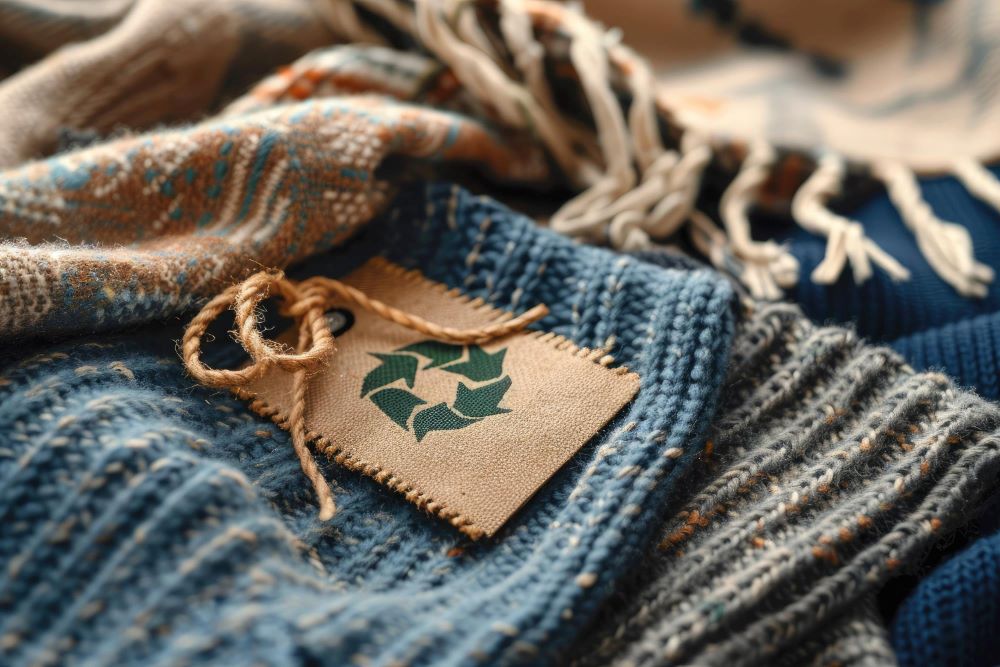Introduction: Why USA vs. Canada Fabric Market Comparison Matters

A designer in New York and a boutique owner in Toronto may be hunting for high-quality fabrics, but the way they source, choose and buy those fabrics can be very different.
The USA and Canada may be neighbours, but their fabric markets do not follow the same rules. From how fabrics are imported to what customers care about to how much people are willing to spend, each country moves in its way.
If you are trying to grow your fashion business in North America, knowing these differences can save you time, money and missed opportunities. This blog breaks it down for you in a simple way, so you know what to expect from each market and how to plan better.
Looking for premium quality? Explore Canadian fabric here : Wholesale Fabric Supplier in Canada
Market Size and Demand

The USA’s fabric market is significantly larger than Canada’s, with higher output, enterprise activity and employment. In 2025, the USA textile market output is projected at $42.35 billion, while Canada’s stands at $2.59 billion.
The numbers speak for themselves. The fabric market in the USA is nearly 16 times larger than Canada’s in terms of output. This scale is driven by a high number of enterprises, a vast fashion and manufacturing ecosystem and stronger domestic demand.
- In 2025, the USA is projected to have 8,000 textile enterprises employing 163,000 people.
- Canada, by contrast, is expected to employ 14,000 people in the sector, with significantly fewer active enterprises.
Labor productivity also shows a clear gap. US textile workers are expected to generate $132,840 per person, while Canadian workers generate around $84,000. This reflects broader industrial capacity, automation and volume in the US market.
While the US market is driven by mass production and volume, Canada’s is smaller, more selective and focused on value-based sourcing. Designers looking to scale fast often turn to the USA. Those building thoughtful, quality-driven collections may find Canada a better cultural fit.
Sourcing and Import Patterns

The USA and Canada both depend heavily on textile imports, with China, Vietnam and Bangladesh among the top sources. The USMCA agreement facilitates smoother fabric trade between the two countries, but the USA imports and exports textiles at a much larger scale.
The United States imports textiles worth around $113 billion in 2024, making it one of the largest textile importers globally. Its main suppliers include China ($28.3 billion), Vietnam ($15.9 billion), India ($10.2 billion) and Bangladesh ($7.26 billion).The US also exports about $24.7 billion in textiles, with Canada receiving $4.32 billion of these exports.
Canada’s textile import market is smaller but significant, with imports valued at approximately C$20.7 billion in 2024. China is Canada’s largest textile supplier at C$5.86 billion, followed by the USA at C$2.59 billion and Vietnam and Bangladesh also playing major roles.
Thanks to the USMCA trade agreement, textile goods move more easily between the USA, Canada and Mexico. This deal lowers taxes and makes customs faster, helping brands and manufacturers buy fabrics across the borders at lower costs and get them quicker.
Even though they work together, the USA imports and exports much more textiles than Canada. This is because the USA has a bigger market and more factories. Canada’s market is smaller and more focused on carefully choosing fabrics, often picking sustainable and high-quality options from trusted suppliers.
Domestic Manufacturing Capabilities

The USA has a much bigger textile manufacturing industry than Canada. It has more factories, higher output and more workers. Canada’s industry is smaller, but it focuses on quality and sustainable fabrics.
In the USA, textile manufacturing is strong and widespread. There are around 8,000 textile companies that produce fabrics for clothing, home use and other industries. This sector gives jobs to about 163,000 people. With better machines and technology, the USA also gets more output per worker.
Canada’s textile industry is much smaller, with around 14,000 people working in this space. It doesn’t have as many factories as the USA. But Canada is known for making high-quality, eco-friendly and technical fabrics in smaller batches.
If a brand is looking for large-scale production, the USA offers more options. If the goal is to find thoughtful, sustainable fabric partners, Canada can be a strong choice.
Consumer Preferences and Trends

In both the USA and Canada, people are choosing fabrics that are comfortable, high quality and better for the environment. But their buying habits are a little different.
United States
In the US, many buyers are looking for fabrics that are both stylish and useful. Clothes made from organic cotton or recycled materials are becoming more popular. People also like smart fabrics that keep them cool or dry. Activewear and casual wear, like athleisure, are big trends, as shoppers want clothes they can wear for different occasions.
Canada
In Canada, people care a lot about sustainability and quality. They prefer eco-friendly fabrics and are willing to pay more for better materials. Many are also shopping for home textiles, like curtains and bed linens, as they focus more on comfort at home. Online shopping is growing fast, giving them access to more fabric choices and brands.
Pricing and Purchase Behavior

Fabric prices in the USA are usually lower and more flexible. In Canada, prices are a bit higher because the market is smaller and more focused on premium and eco-friendly fabrics.
United States
In the US, there are many fabric options at different price points. You can find both low-cost and high-end fabrics. Because the market is big and competitive, prices stay affordable. Many businesses offer bulk deals and discounts so buyers can save money, especially when ordering in large quantities.
Canada
In Canada, fabric prices are often higher. The market is smaller and many buyers prefer high-quality or sustainable fabrics. Canadian customers also care about where the fabric comes from and how it’s made. They often choose brands that are local or follow ethical practices, even if it costs more.
Also Read: The Best Ethical And Affordable Clothing Brands In Canada
Popular Fabrics and Seasonal Trends

The choice of fabrics in the USA and Canada reflects climate, lifestyle and fashion preferences. Here's how the two markets differ:
United States
-
Climate diversity across regions means a wider variety of fabrics is in demand.
-
Cotton remains the most widely used, especially in the South and West.
-
Polyester and spandex blends are common in activewear and casuals.
-
Denim continues to dominate everyday wear.
-
Linen and rayon trend in warmer months, while wool is preferred in northern states during winter.
- Growing interest in organic cotton and recycled polyester due to sustainability trends.
Canada
-
Longer and harsher winters drive higher demand for insulating fabrics like wool, fleece and flannel.
-
Cotton is still widely used in summer, but seasonal demand is lower than in the US.
-
Sustainable materials like bamboo and hemp are gaining attention, especially in urban areas.
- Winter fashion focuses more on layering, with functional fabrics being key.
Seasonal Buying Patterns
|
Season |
USA Fabrics |
Canada Fabrics |
|
Spring/Summer |
Cotton, Linen, Rayon, Spandex |
Cotton, Bamboo, Light Wool |
|
Fall/Winter |
Wool, Flannel, Fleece, Denim |
Heavy Wool, Fleece, Thermal Fabrics |
Regulatory Environment and Compliance

The USA and Canada have different rules for how fabrics are tested, labeled and imported. Here's how they compare:
United States
-
Labeling laws are enforced by the Federal Trade Commission (FTC).
-
- Fabrics must show fiber content, country of origin and care instructions.
- Fabrics must show fiber content, country of origin and care instructions.
-
-
Safety standards are managed by CPSC (Consumer Product Safety Commission).
-
- Flammability rules apply, especially for children’s clothes.
- Flammability rules apply, especially for children’s clothes.
-
-
Customs and Border Protection (CBP) checks all imported fabric for compliance.
- Increasing focus on sustainable sourcing and supply chain transparency.
Canada
- Rules are managed by Competition Bureau Canada under the Textile Labelling Act.
-
- Labels must show fiber content and dealer information in both English and French.
- Labels must show fiber content and dealer information in both English and French.
-
-
Health Canada oversees product safety, especially for imports.
- Canada is also moving toward more eco-friendly and ethical trade regulations.
Key Differences:
|
Area |
USA |
Canada |
|
Labeling Language |
English |
English + French |
|
Labeling Law Body |
FTC |
Competition Bureau Canada |
|
Product Safety |
CPSC |
Health Canada |
|
Customs Check |
CBP |
Canada Border Services Agency |
Logistics and Distribution Channels

How fabrics move from suppliers to fashion brands varies between the USA and Canada due to infrastructure, geography and market size.
United States
-
A large domestic market means most fabric distribution happens within the country.
-
Major ports: Los Angeles, New York, Savannah and Houston handle large volumes of imported textiles.
- Strong rail and trucking networks support fast movement across states.
-
Regional warehouses help brands manage inventory and reduce delivery times.
- Online B2B platforms and wholesale marketplaces are widely used for sourcing.
Canada
- Smaller market with heavier reliance on imports, especially from the US and Asia.
-
Key ports: Vancouver, Montreal and Halifax manage most fabric shipments.
-
Longer delivery timelines due to fewer distribution hubs and vast geography.
- Brands often work with cross-border distributors or third-party logistics partners for efficiency.
- E-commerce for B2B is growing but not as mature as in the US.
Key Differences:
|
Aspect |
USA |
Canada |
|
Distribution Scale |
Nationwide, large-scale |
Regional, more centralized |
|
Key Transport Modes |
Trucking, Rail, Air |
Trucking, Rail, Cross-border shipping |
|
Ports of Entry |
LA, NY, Savannah, Houston |
Vancouver, Montreal, Halifax |
|
Sourcing Channels |
Strong digital B2B ecosystem |
Growing online sourcing, more traditional |
Digital Adoption in Fabric Sourcing

Both the USA and Canada are moving towards digital platforms to make fabric sourcing easier, but their progress and focus areas differ.
United States
- The US market has widely embraced digital sourcing platforms and online fabric marketplaces, helping buyers connect with suppliers faster.
-
Virtual fabric showrooms and digital catalogs allow designers to view and compare fabrics without physical samples.
- Many companies use inventory management software for real-time stock updates, improving order accuracy.
- Digital tools like data analytics help brands predict fabric trends and demand.
- E-commerce payments and contracts are common, streamlining purchases.
Canada
- Digital adoption in Canada is growing but at a slower pace compared to the USA.
- Many Canadian buyers still rely on trade shows, direct supplier relationships and phone/email communications.
- However, interest in B2B e-commerce platforms is increasing, especially for sustainable and locally sourced fabrics.
- Virtual sampling and online fabric catalogs are becoming more popular in urban centers.
- Cross-border fabric sourcing often requires digital tools for tracking shipments and customs clearance.
Also Read : Leading Fashion Influencers in Canada
Conclusion
The fabric markets in the USA and Canada are similar but also have important differences. The USA has a bigger market, faster digital tools and better logistics. Canada focuses more on rules, cross-border trade and growing interest in sustainable fabrics.
For brands and suppliers, knowing these differences helps make better choices when buying or selling fabric. Understanding how each market works can make business easier and more successful.
Whether you work in the USA or Canada, keeping up with these facts will help you grow and stay ahead in the fashion world.
Your go-to wholesale fabric supplier in the USA is just a click away!
Sourcing Support with Fabriclore
Need help finding the right fabrics for your brand in the USA or Canada? Fabriclore is here to support you. With a wide range of quality fabrics, expert advice and easy ordering, we make fabric sourcing simple and reliable.
Get in touch with us today and take your fashion business to the next level.
FAQs
What are the major differences between Canada and the USA?
Canada and the USA are neighbors but different in some ways. The USA has more people and a bigger economy. Canada has two official languages, English and French and has strict rules for workers and the environment. These differences affect how businesses work in each country.
Why are Canadian made clothes so expensive?
Clothes made in Canada cost more because workers earn higher wages and there are stricter safety and environmental rules. Also, Canada has a smaller clothing market, so they make fewer clothes, which can increase costs. Many Canadian brands focus on quality and eco-friendly products, which can make clothes pricier but better.
What is the main trade between the US and Canada?
The USA and Canada trade many goods like cars, machines and food. In fabrics and clothes, they buy and sell materials and garments to each other. The USMCA trade agreement helps both countries trade easily by lowering taxes and making rules clear.
We also happen to be a magnet for suggestions, and would love to catch yours….throw us yours on hello@fabriclore.com




